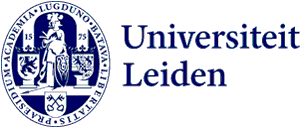
New method for extracting human DNA from archaeological objects yields success
An international team of researchers led by Leiden archaeology professor Marie Soressi and Leipzig senior geneticist Matthias Meyer has recovered the DNA of a woman belonging to an Ancient North Eurasian population from a 20,000-year-old pendant. This is the first time DNA analysis has been used to tell who was handling a specific object in the deep past.
Soressi, the senior archaeologist of the study, worked closely with geneticists from the Max Planck Institute in Leipzig on this project. Together with an international team of geneticists and archaeologists from different countries they have just published in the interdisciplinary journal Nature a new method to recover the DNA of the person who handled objects made of bones or teeth from the Stone Age. Like forensic scientists, they applied their newly developed method to Stone-Age ornaments and extracted an ancient woman’s DNA from deep inside a pierced deer tooth used as a pendant.
Methodological breakthrough
Until now, it was almost impossible to establish whether objects were used by certain people, men or women for instance. This new method now makes it possible to connect specific objects with specific people in the deep past without causing damage to the objects. Soressi, who is the co-senior author of the study, is thrilled with the results of the project. ‘This new technique and the recovery of ancient human DNA from Palaeolithic objects is opening up new perspectives for deciphering the role of individuals in Stone-Age societies according to their sex and ancestry.’
Bone jewellery and tools from the Palaeolithic are rare and fragile. It was essential to develop a non-destructive method, says Elena Essel, the lead author of the study and a PhD student at the Max Planck Institute. ‘I used the principle of stepwise temperature rise that is used to wash laundry. The artefacts were soaked in several phosphate baths at temperatures of up to 90°C. We then looked for the DNA in the wash waters.’

For the new method to work, measures need to be taken to protect objects from human contamination during excavation, says Matthias Meyer, the senior geneticist in the study. ‘It was only the meticulous work of archaeologists who excavated using gloves and face masks that enabled the successful recovery of ancient human DNA. Their efforts were a game changer!’
Powerful collaboration
This project benefited greatly from input from both the natural sciences and the humanities. Soressi acknowledges that there is still a lot of work to do, starting with a better understanding of what needs to be done at an excavation to protect archaeological finds against DNA contamination. ‘We archaeologists will have to change the way we do excavations but if we do, we will be able to better assess if there was a division of labour in Palaeolithic times and how these societies were structured. Did Neanderthal and Homo sapiens women only work hide and manufacture clothes or were they also involved in hunt-related activities? This discovery should enable us to say more in the coming decade about the role of individuals in very ancient human societies.’
Banner: Elena Essel, lead author of the study, holding the 20,000-year-old pendant from Denisova Cave in the DNA clean laboratory in Leipzig, Germany. Max Planck Institute for Evolutionary Anthropology
